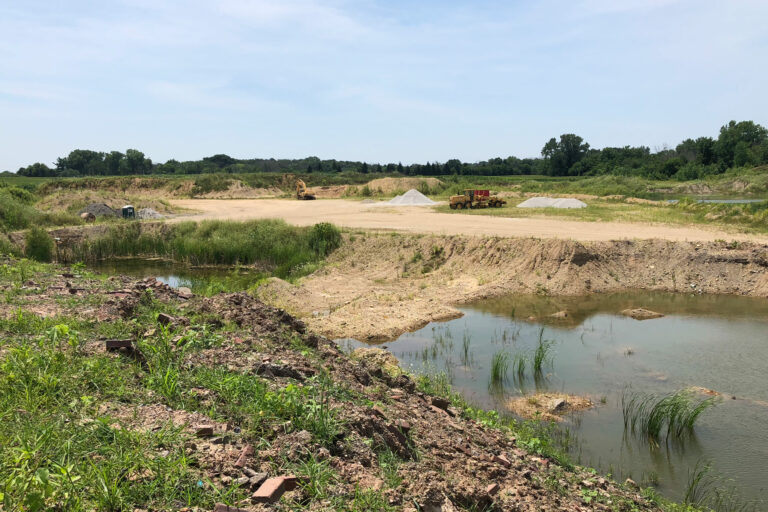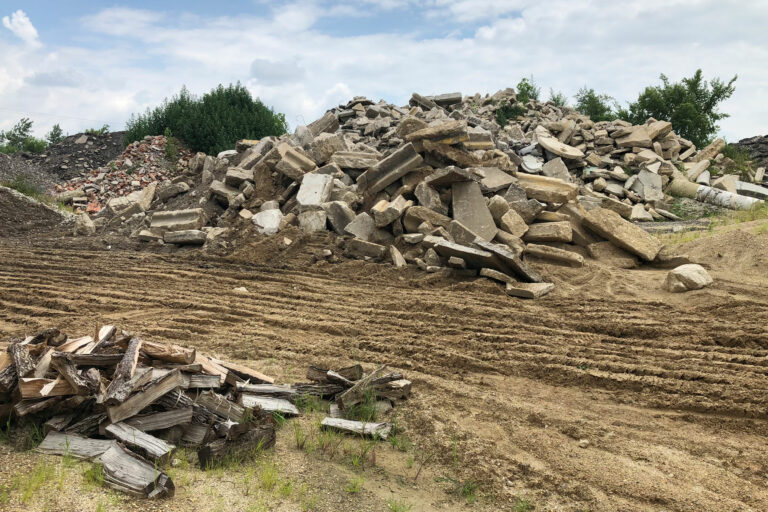- 630-240-2955
- [email protected]
Illinois Environmental Protection Agency (IEPA) Regulations for Soil Used as Fill
In 2010, the state of Illinois amended the Illinois Environmental Protection Act, imposing new requirements for the disposal of Clean Construction and Demolition Debris (CCDD) and uncontaminated soil fill in quarries, mines, or other excavated sites. Under the new law, owners of non-residential construction projects must obtain an engineer’s certification that the soil is uncontaminated before it can be deposited in fill operations.
CCDD is defined as uncontaminated broken concrete without protruding metal bars, bricks, rock, stone, or reclaimed asphalt pavement generated from construction or demolition activities. When uncontaminated soil is mixed with any of these materials, the uncontaminated soil is also considered CCDD.
Beginning in 2008, the IEPA has required operators of CCDD fill sites to obtain a permit. The new law, Illinois Public Act 96-1416, extended this permit requirement to uncontaminated soil fill operators. The IEPA now requires registration and a permit from all uncontaminated soil fill operations. The law also imposed additional requirements on owners and operators of CCDD and uncontaminated fill operations, requiring them to:
- Maintain records relating to each load of fill accepted, including the hauler, address of source site, owner/operator of source site, weight/volume, and date received;
- Obtain a certification from the owners or operators of the site of origin that the site has never been used for commercial or industrial purposes and is presumed to be uncontaminated soil, or a certification from a licensed professional engineer that the soil is uncontaminated;
- Confirm that all uncontaminated soil was not removed as part of a cleanup or removal of contaminants;
- Visually inspect each load, screen each load with an ionization detector or other approved device that detects volatile organic compounds, and document these screening activities; and
- Collect a fee for each load.
When the new requirements were put in place in 2010, many construction firms and owners of construction projects were caught off guard. Our team at CSC has spent years providing CCDD assessment services to excavators. Let CSC handle the assessment of your soil removal and supply you with the proper certifications to get your soil to the proper CCDD facility.
How Can CSC Help with CCDD?
All soil brought to fill operations for disposal, including soil mixed with CCDD, must be certified on LPC-662 or LPC-663 forms. CSC’s team of experts have years of experience permitting and profiling soils for CCDD. When you let CSC handle the assessment of your intended soil removal, we can supply you with the proper certifications to get your soil to a trusted CCDD facility without issue. Our team determines the analysis of collected samples required based on the site’s history. For residential properties, source site certification form (LPC-662) is required. For commercial/industrial properties, uncontaminated soil certification form (LPC-663) is required.
For commercial properties, a potentially impacted property (PIP) evaluation must be completed. PIP means property on which a historical or current use, or contaminant from a proximate site, increases the presence or potential presence of contamination at the source site. PIP is intended to identify soil that is more likely to be contaminated and in need of professional evaluation and certification before placement in a fill site. When determining whether a property is a PIP, the current and prior uses of the property as well as the current and prior uses of adjoining property must be considered. The IEPA has set forth a number of site assessment standards and policies that may be used to determine whether a property is PIP. Our team of specialists have years of experience and can streamline this process for you.
Once a PIP evaluation is done, our specialists complete soil screening and sampling. During the screening process, a visual/olfactory screening is done as well as a PID screening. The purpose of the screening process is to identify the defining areas, contaminants, and conditions at the property that warrant further attention. The sampling process includes composite or discrete samples. A composite sample is comprised of soils from an entire depth profile or several locations within a prescribed area. A discrete sample is from a distinct or prescribed soil depth interval or location. A measure of soil acidity or alkalinity must also be conducted in order to certify that soil pH falls within the acceptable pH range as deemed by the IEPA.
Based on the property and surrounding property historical and current uses, samples for contaminants of concern need to be collected. The IEPA has set forth regulations for the Maximum Allowable Concentrations (MAC) of chemical constituents in uncontaminated soil that may be used as fill material at regulated fill operations. MACs are the lowest tier 1 chemical-specific soil value of the exposure routes for residential and construction worker receptors set forth by the IEPA. In order for soil to be accepted at a CCDD fill operation, you must certify that it is either uncontaminated or that it meets the MAC standard.
Based on the soil analytical results, our team determines a soil management plan for your property. There are three options for soil depending on your results: re-use, CCDD, or landfill. CCDD and uncontaminated soil fill operations are prohibited from accepting soil for disposal unless it in compliance with the CCDD requirements set forth by the IEPA. Rejected loads cannot be returned to the site of origin for final disposal. When a load is rejected, it is documented by the CCDD facility and reported to the IEPA. The IEPA will then follow up and request documentation for the rejected loads’ final disposal. This can create a huge mess on job sites and leave you with soils waiting for a waste profile analysis to be sent to a licensed landfill. Not to mention the added costs associated with loads of soil that are returned to the site and the higher landfill rates you are forced to pay.



